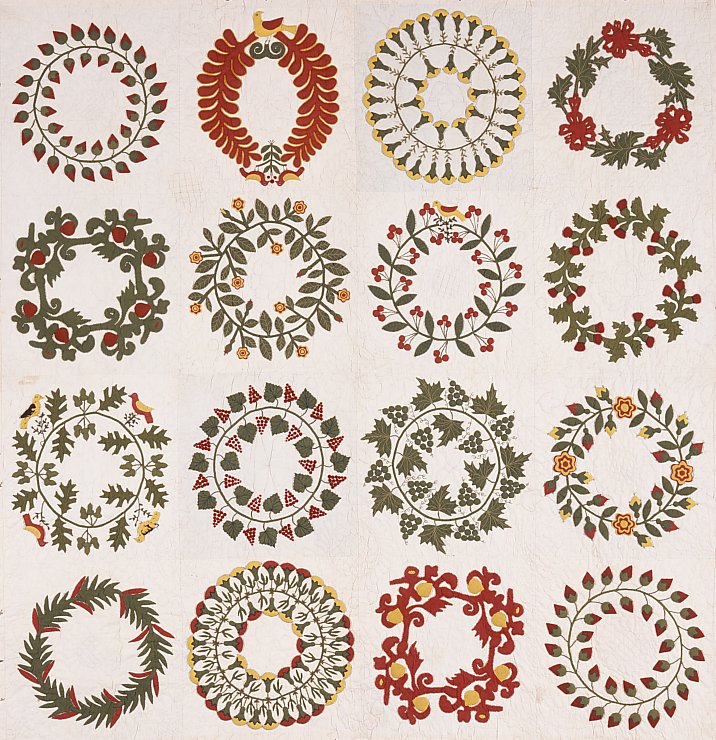
| Maker | Sarah Jane Bower (American, 1842–1920) |
| Date of Creation | c. 1860 |
| Location | Carroll County, Maryland |
| Materials | Cotton |
| Institution | Washington County Museum of Fine Arts |
| Credit Line | Gift of Mr. & Mrs. Robert S. Martin, in memory of his sister, H. Jane Martin |
| Accession Number | A3777,02.0910 |
| Photo Credit | Collection of Washington County Museum of Fine Arts, Hagerstown, MD |
19h-century American quilts are renowned for their inventiveness and beauty. Among the most sophisticated examples were those made by Maryland needlewomen in the middle decades of the century. At that time, Marylanders had access to a wide variety of imported textiles that arrived daily from Europe in the busy port of Baltimore, as well as domestic cloth. Women took advantage of these bright fabrics, cutting out patterns and sewing them onto plain white bedcovers to create quilts in a unique style that reflected Maryland’s mix of British and Germanic heritage. These quilts merged the English fashion for appliquéd floral designs with the German red-and-green cut-paper style. Made by Sarah Jane Bower of Carroll County, this quilt is of a type known as an album quilt. Album quilts are made up of a collection of appliqué squares laid out in rows that resemble the pages of a scrapbook. Created by women individually or in groups, they were made to commemorate a special occasion, to honor a prominent community member, to celebrate a wedding, or to serve as a memento for a departing friend. Album quilts were not intended for use as everyday bed covers; instead, they were made for special display and were cherished as keepsakes by their owners. Family records indicate that Miss Bower made this quilt as part of her hope chest, before she married John Addison Martin, also of Carroll County. Appliquéd with vibrant floral wreaths adorned with birds, fruit, and flowers, the quilt also features a sinuous grapevine pattern that borders the squares and softens the rigidity of the grid composition. No two squares are exactly alike, the strawberries in opposite corners having different colored seeds, formed of tiny French knots. A skilled needlewoman, Miss Bower added embroidered details to the leaves and flowers and used fine quilting stitches throughout.

